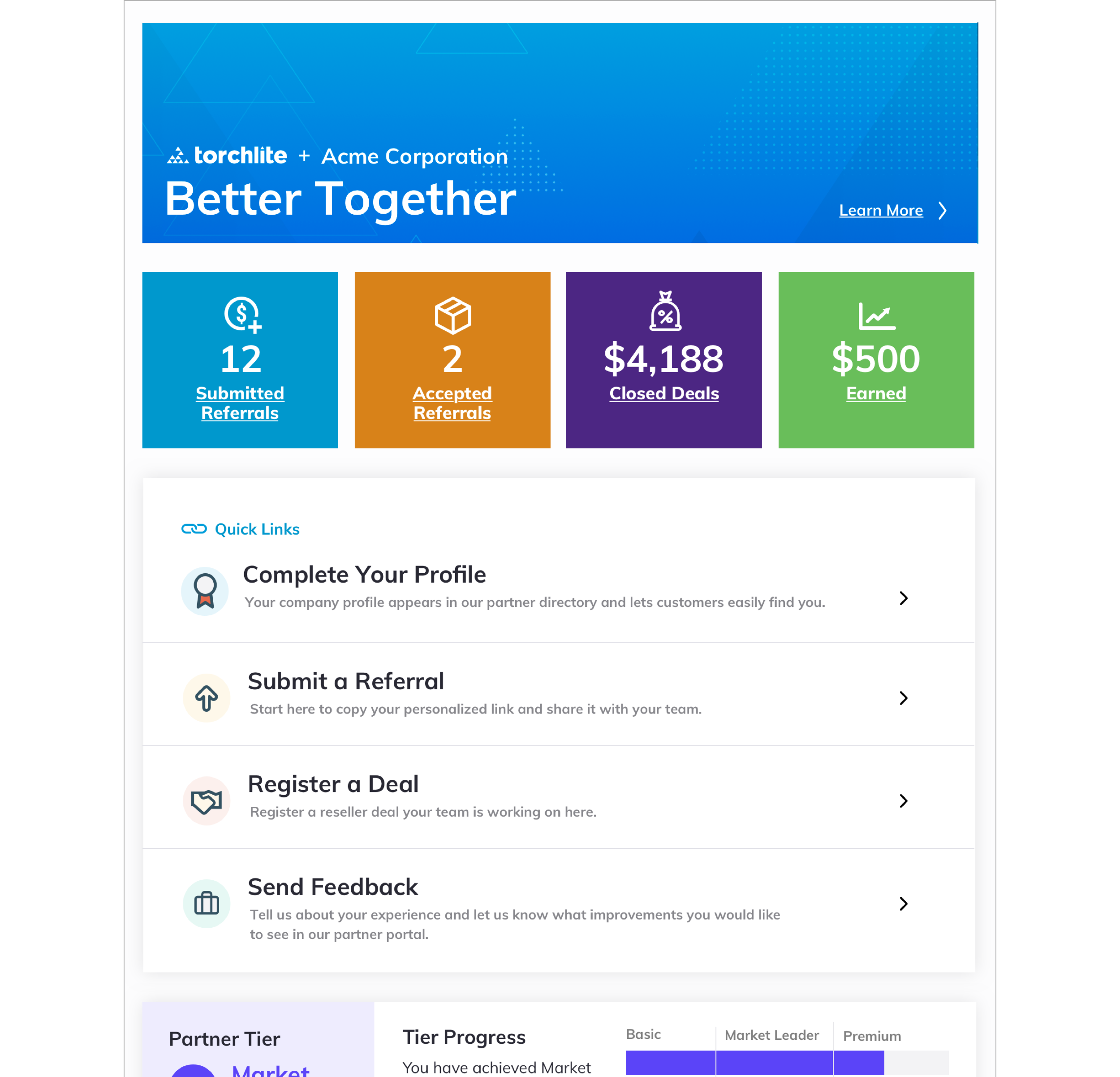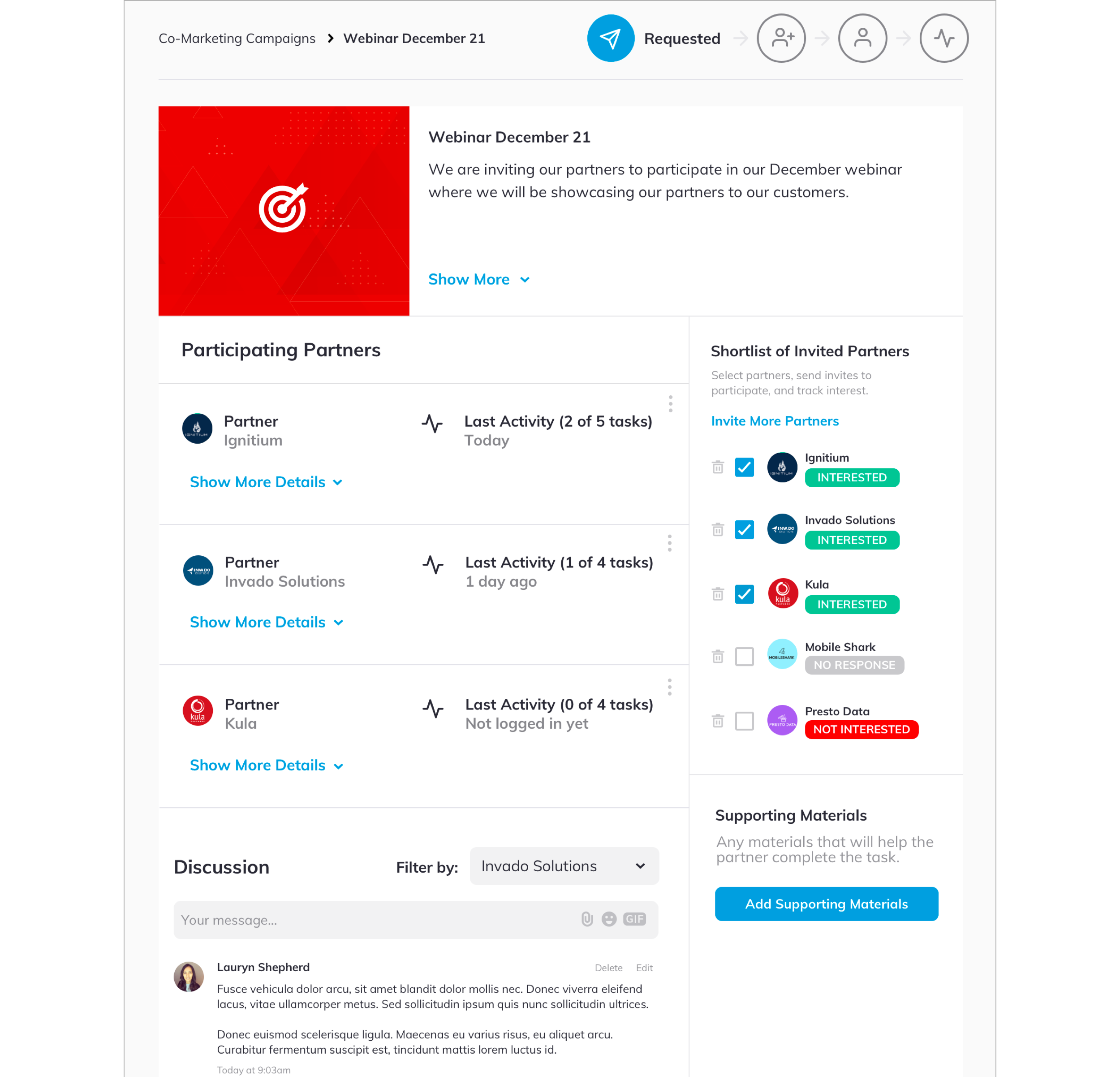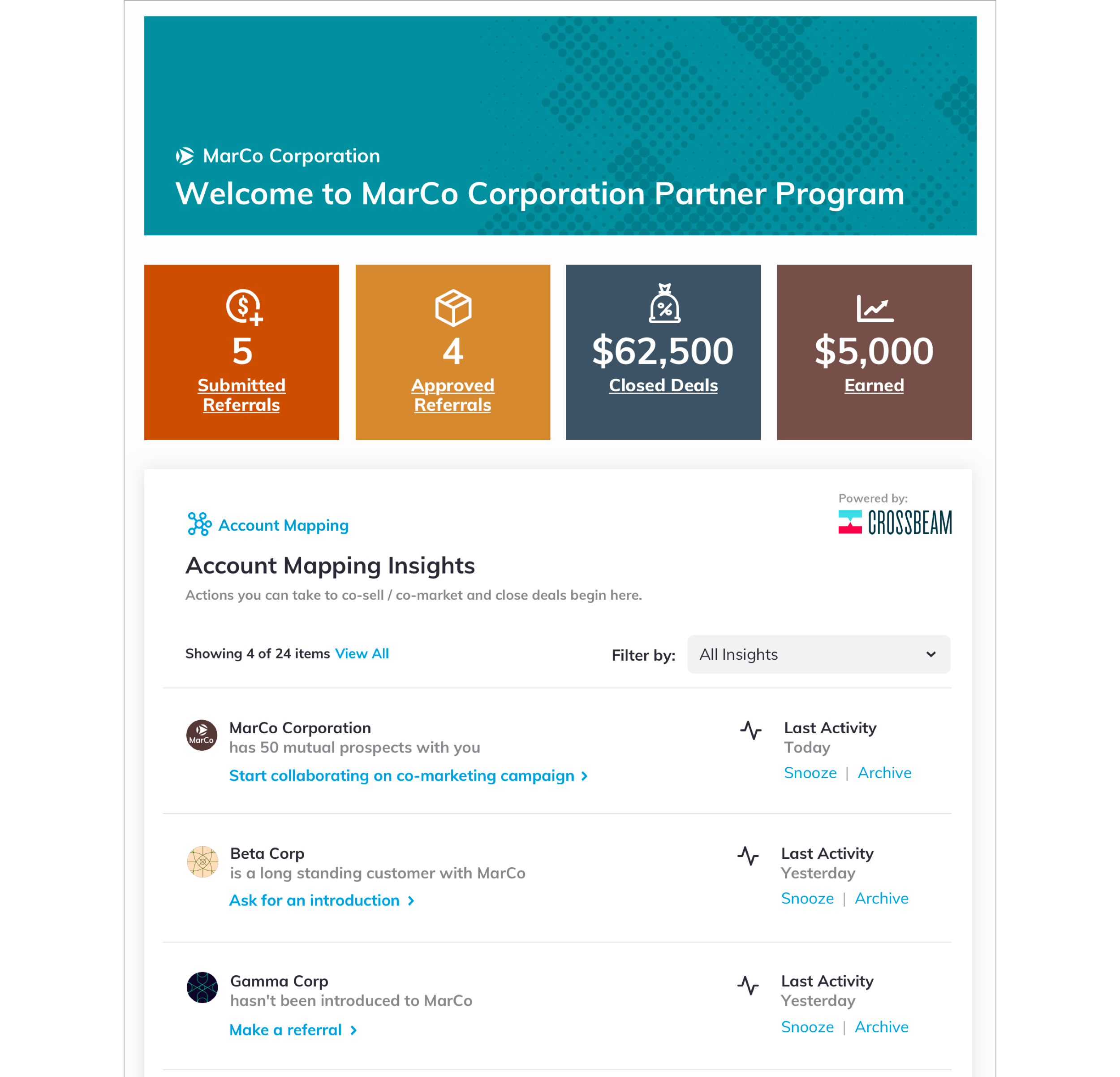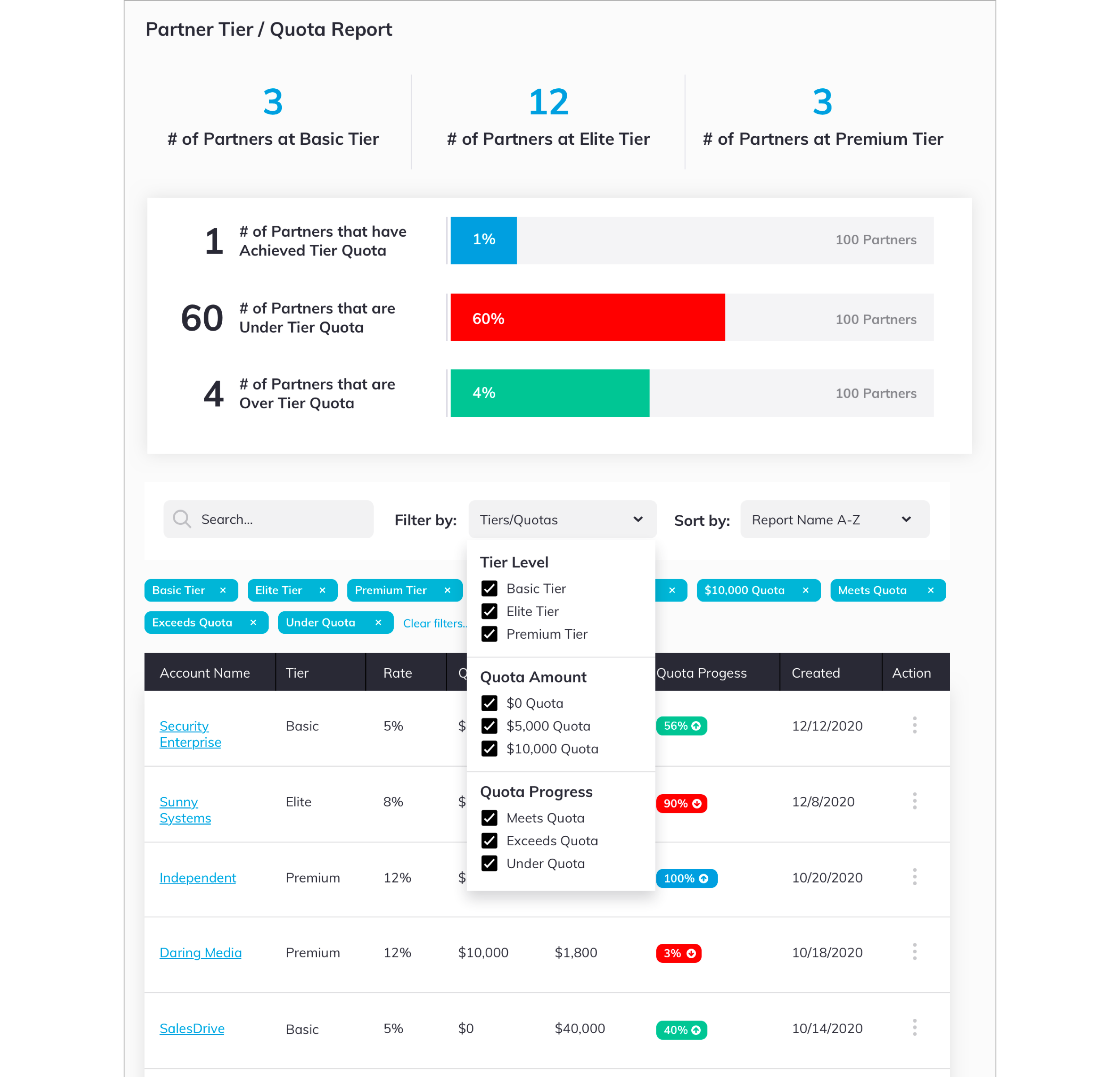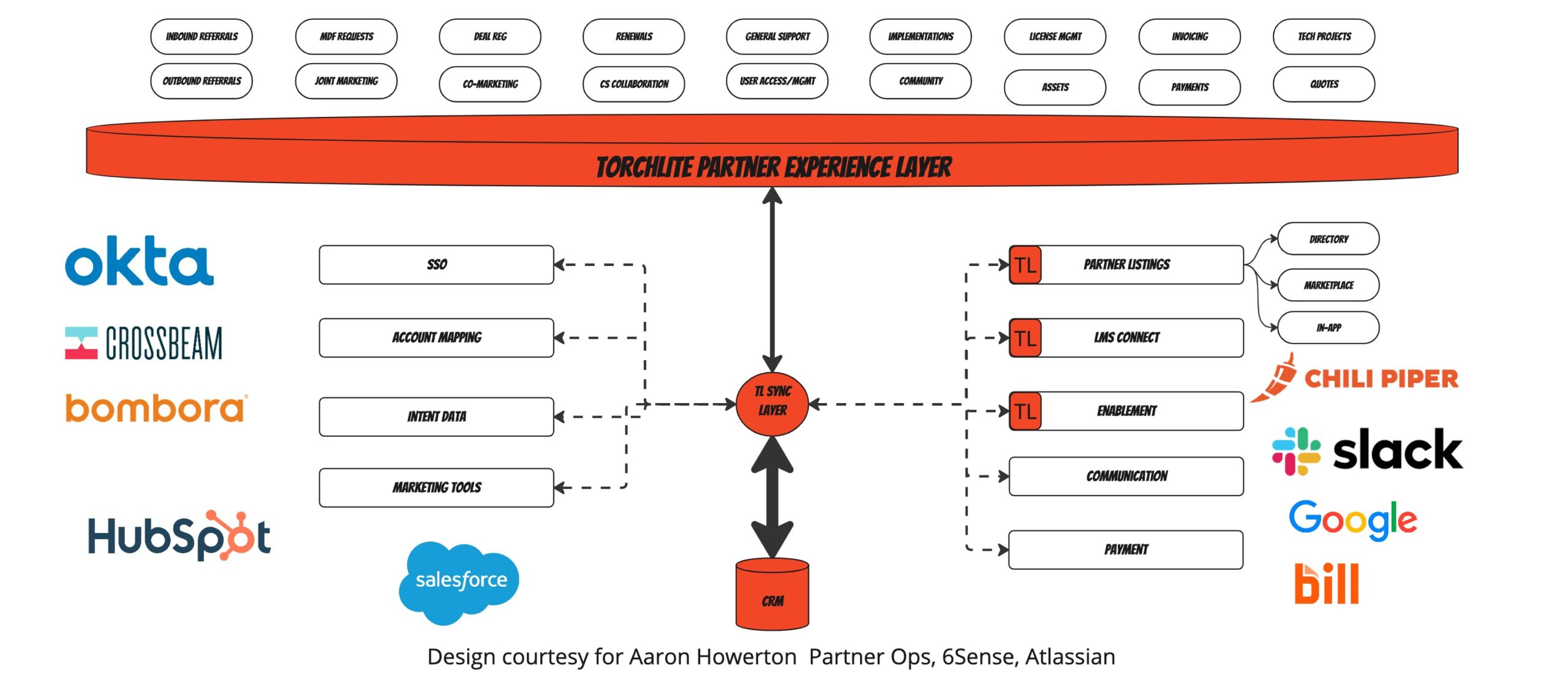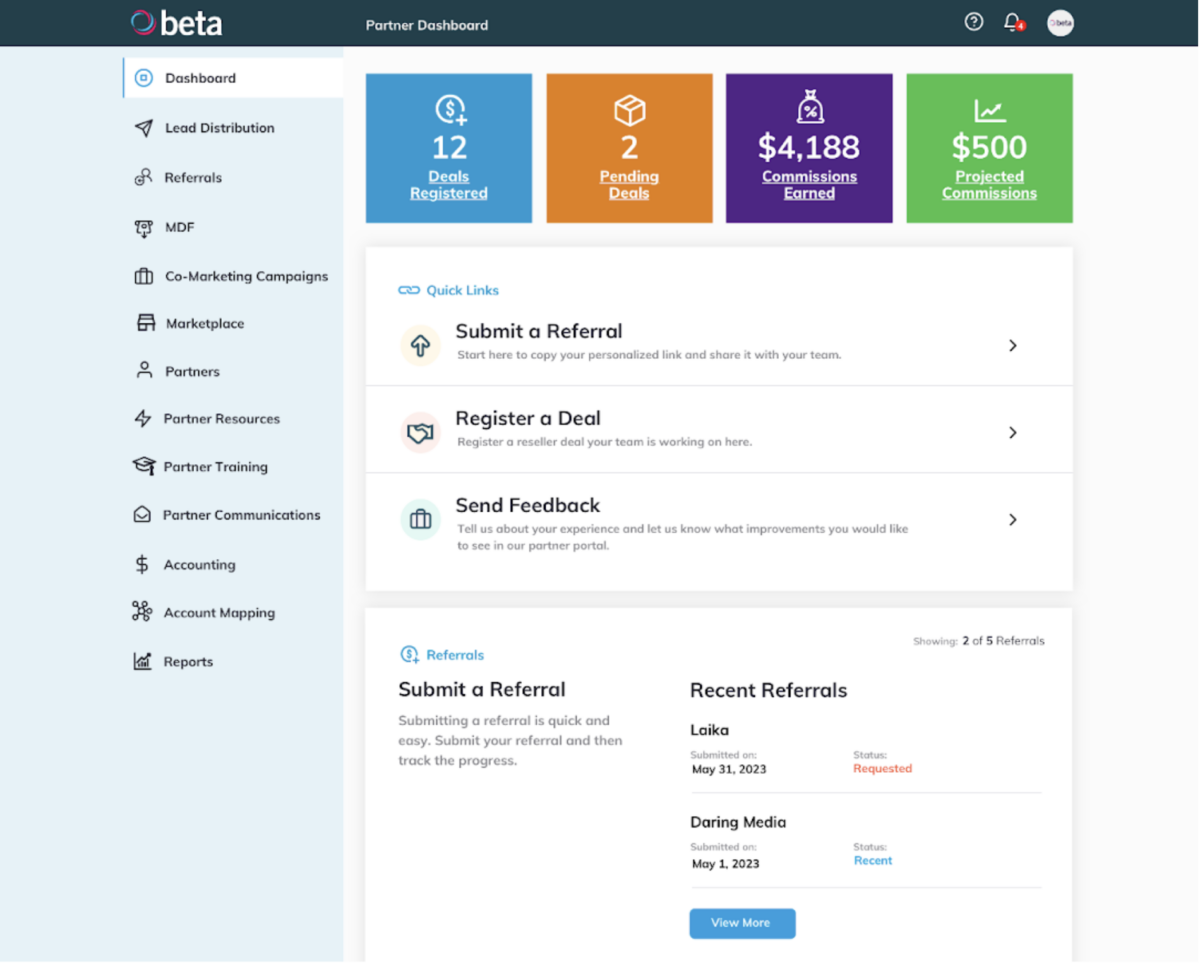Partner Relationship Management: How Software Fuels Success
Most businesses know the value of partnering with other organizations. Partner programs provide a plethora of possible benefits, including increased referrals, amplified marketing efforts, and more. But how can a company use partner relationship management to create a successful business? And can a partnership management strategy really make that much of a difference for your bottom line?
At Torchlite, we know the answer to this question is a resounding “yes.” The trick, though, is developing a good partner management framework—and having the tools to support it. That’s exactly what we’ll cover in the following article: PRM (partner relationship management) software, and why your partner strategy benefits from using it. We’ll answer questions such as:
- What is partner relationship management and what are the components involved in it?
- How can I improve my relationship management with my partner through software?
- What should I look for in a PRM software solution for my organization?
We hope this article teaches you how to vet PRM software and how to better run your PRM strategy as a whole. Speaking of strategy, the first step to understanding PRM software is laying out all the crucial pieces of partner management—then knowing how software can support them. Let’s start with:
What Is the Purpose of PRM?
Partner relationship Management [PRM] exists to support, amplify, and ensure the success of your partnerships with other organizations. Partnering can take many forms—resellers, affiliates, co-marketers, and more—but no matter what type of partnership you form, each requires regular care to benefit both parties. Most businesses know this in theory, but quickly fall victim to the ever-evolving complexity of partner management.
Once you have more than one partner program going, it becomes…
- …harder to maintain constant, thorough communication with each partner.
- …tougher to track the unique terms for each partnership, and when to renegotiate them.
- …increasingly important to track partner attribution—but increasingly difficult as well.
Together, these three form the crux of partner management: properly balancing communication and financial information for multiple relationships. What does a partner manager do when they’ve got to keep track of so many moving parts—for the benefit of their company as well as their partners? That’s where software really makes a difference. Automation, consolidation, and data distillation are all critical when handling the complex role of partner management. Speaking of, let’s delve a little deeper into:
Partner Management Roles and Responsibilities
A partner manager has a simple role in theory: manage an organization’s partnerships. However, doing this requires wearing many hats and fulfilling a wide range of responsibilities.
First, let’s talk about that hat selection. A partner manager, at any moment, may have to play the role of:
- Business liaison
- Comms facilitator
- Data analyst
- Educator
- Finance reporter
- Negotiator
- Operations director
- Salesperson
- And much more!
If that sounds like a lot, it’s because well, it is. And it probably goes without saying, but each of those roles has their own unique set of functions they provide. We won’t list all of them, but here are just a few of the things partner managers might have to do in their day-to-day jobs:
- Send updates to partners about new business goals
- Provide resources, training, or support to any number of partners
- Sell potential partners on the idea of forming a partnership
- Train new partners on shared resources and program details
- Coordinate with their sales and marketing team on partner program initiatives
- Prove the value of each partnership to leadership teams through reporting
Needless to say, keeping all of these roles organized can be quite the challenge. Having a good strategy for tackling all of these elements is critical not just for the success of your partner programs, but their survival as well. As a partner manager, one of the toughest things is making sure each partner gets the proper attention, communication, and support to flourish. This is especially tough because a “one size fits all” approach doesn’t work for every partner. Each organization a partner manager works with has different needs, schedules, and partnership goals.
While each partner program will be unique, having a solid strategy to start with simplifies the process. Keep reading to learn more about PRM strategy best practices and how a software should support you.
What Is the Best PRM Strategy?
Building a sound partnership relationship management strategy involves nine key phases—almost all of which benefit greatly from the support of a software solution. As you read through each of these phases, keep in mind that this process is not necessarily linear and you may have to revisit some of these phases multiple times—or even slightly alter the order, depending on what makes sense for your organization.
- Define your goals. As a business, you need to know who you’re seeking to partner with, but more importantly, your reasons for partnering with them. How will you benefit from working with them, and how will they benefit in return? These will be the questions on the mind of not just your hopeful partners, but your teammates and your leadership team as well.
- Identify potential partners. Look for organizations that will align with your goals, help you reach your target market, and will enhance your business offerings in some way. Technology partners, referral partners, distributors, and co-sellers are just a few of the possibilities.
- Create a partner agreement. While it may help to have a starting template, it’s important to remember that every partnership will be slightly different, with different terms, incentives, resources, and any number of other variables. Here, a solution like Torchlite is invaluable: it allows you to form individual channels for each partner and outline the details of your unique agreement with them. This sets you up perfectly for the following phase, which is to…
- Set up a partner portal. You and your partners each need a way to quickly access resources, track progress, and communicate with each other. While email might suffice for one or two partners, a flooded inbox quickly gets tough to stay on top of. Not only that, but a program like Torchlite takes comms a step further than email—by automating certain communications and announcements on a schedule. You can rest easy knowing that your partners will know key information when it counts, such as company updates or when their contract is up for renewal.
- Compile training and enablement resources. As you add new organizations to your partner portfolio, they’ll need access to a wide variety of materials depending on the nature of your partnership. Marketing materials, training videos, and vision/mission statements are some examples of relevant resources. If you’ve set up a partner portal through a software solution like Torchlite, sharing any number of those resources becomes a lot simpler.
- Establish a measurement and reporting system. The ability to share data on each partnership is invaluable. Accurate reporting shows partners why working together benefits you both, and it also helps communicate to your leadership team what partnerships are bringing to your organization. Financial reports, client conversions, referrals—all of which are possible through a PRM software solution—make measuring and reporting that much richer in detail.
- Decide on your incentives. Partnerships can provide more reward than simple, transactional benefits. Try to find ways that your business can sweeten the deal for partners. Commemorate milestones, celebrate certain goals, and offer incentives that only your organization can provide. And thanks to Torchlite’s smooth integration with CRM platforms, you’re able to track incentives in the same channel your partner receives them.
- Promote continual engagement. Forming a new partnership is not an end, but a beginning—a time to set standards and expectations, especially around communication. If you’re in constant, intentional contact with each partner, they will feel both valued and informed about your business relationship. Share relevant information like marketing efforts, business campaigns, and milestone progress—all in the same channel.
- Prioritize constant improvement. No PRM process is perfect, even when executed well. Create space for your partnerships to grow and evolve, and provide feedback to support your decisions. Needless to say, the last thing you want is to be limited by the tools at your disposal. Many PRM programs struggle not because their strategy is poor, but because their software tools inhibit what is possible. Torchlite exists to solve that problem—with a software solution of “Simply Intelligent” design: a sophisticated, flexible design with a dynamic, adaptive workflow (see below). Set up each channel with the processes you need and the software integrations to make it work seamlessly for your operations.

